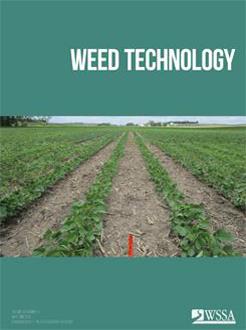Understanding how plants alter their growth in response to interplant competition is an overlooked but complex problem. Previous studies have characterized the effect of light and water stress on soybean or common ragweed growth in monoculture, but no study has characterized soybean and common ragweed growth in mixture. A field study was conducted in 2015 and 2016 at the University of Nebraska-Lincoln to characterize the growth response of soybean and common ragweed with different irrigation levels and intraspecific and interspecific interference. The experiment was arranged in a split-plot design with irrigation level (0, 50%, 100% replacement of simulated evapotranspiration) as the main plot and common ragweed density (0, 2, 6, 12 plants m-1 row) as the subplot. Crop- and weed-free controls and three mixture treatments were included as subplots. Periodic destructive samples of leaf area and biomass of different organ groups were collected, and leaf area index (LAI), aboveground biomass partitioning, specific leaf area (SLA), and leaf area ratio (LAR) were calculated. Additionally, soybean and common ragweed yield were harvested, and 100-seed weight and seed production were determined. Soybean did not alter biomass partitioning, SLA, or LAR in mixture with common ragweed. Soybean LAI, biomass, and seed size were affected by increasing common ragweed density. Conversely, common ragweed partitioned less new biomass to leaves and increased SLA in response to increased interference. Common ragweed LAI, biomass, and seed number were reduced by the presence of soybean and increasing common ragweed density; however, seed weight was not affected. Results show that adjustment in biomass partitioning, SLA, and LAR is not the method that soybean uses to remain plastic under competition for light. Common ragweed demonstrated plasticity in both biomass partitioning and SLA, indicating an ability to maintain productivity under intra- and inter-specific competition for light or soil resources.
Nomenclature: Common ragweed; Ambrosia artemisiifolia L.; soybean; Glycine max L. Merr.






